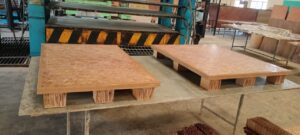1. Executive Summary
This project report provides an in-depth analysis of establishing a Bamboo Stick Manufacturing Unit in India. With the rising demand for bamboo sticks in industries such as incense (agarbatti) making, handicrafts, and culinary use, the project aims to capitalize on the abundant availability of bamboo resources in India. The focus is on sustainable production, cost-effectiveness, and meeting market demand.
2. Project Overview
2.1 Objectives
- To manufacture high-quality bamboo sticks for diverse applications.
- To promote sustainable practices by utilizing renewable bamboo resources.
- To create employment opportunities and support rural economies.
2.2 Scope
The project involves the production of:
- Bamboo sticks for incense manufacturing.
- Skewers and chopsticks for culinary use.
- Bamboo sticks for craft and decorative purposes.
3. Market Analysis
3.1 Industry Overview
- India is the largest producer and consumer of incense sticks, driving significant demand for bamboo sticks.
- Bamboo skewers and chopsticks are increasingly popular due to the growth of street food culture and Asian cuisine trends.
- Handicrafts and DIY enthusiasts require bamboo sticks for creative projects.
3.2 Target Market
- Incense manufacturers.
- Food industry (restaurants, catering services, and retail stores).
- Handicraft and DIY product retailers.
3.3 Competitive Analysis
- Competitors include small-scale bamboo stick manufacturers and imported products.
- Competitive advantage lies in superior quality, sustainable practices, and cost-effective production.
4. Technical Feasibility
4.1 Location and Infrastructure
- Proposed location: Bamboo-rich regions such as Assam, Tripura, or Karnataka.
- Facility requirements: 4,000 sq. ft. for production, storage, and administrative operations.
4.2 Production Process
- Raw Material Procurement: Sourcing mature bamboo from local suppliers or plantations.
- Cutting: Cutting bamboo culms into small sections.
- Splitting and Slicing: Splitting bamboo sections into thin strips and slicing them into sticks.
- Drying: Drying sticks to remove moisture and enhance durability.
- Polishing and Smoothing: Sanding and polishing sticks for uniformity.
- Packaging: Bundling and packaging sticks for transportation and sale.
4.3 Machinery and Equipment
- Bamboo splitting machines
- Slicing machines
- Drying kilns
- Polishing machines
- Cutting and bundling equipment
5. Organizational Structure
5.1 Management Team
- Project Manager: Overseeing operations and strategy.
- Production Supervisor: Managing the manufacturing process.
- Quality Controller: Ensuring adherence to standards.
- Marketing Executive: Building market connections and sales.
5.2 Workforce Requirements
- Skilled labor for operating machinery:
- Unskilled labor for material handling and packaging:
6. Financial Analysis
6.1 Capital Requirements
- Land and Building:
- Machinery and Equipment:
- Raw Material (Initial Stock):
- Working Capital:
- Miscellaneous Expenses:
- Total Initial Investment:
6.2 Revenue Projections
- Estimated monthly production:
- Average selling price per stick:
- Monthly revenue:
- Annual revenue:
6.3 Cost Structure
- Raw materials:
- Labor:
- Utilities and overheads:
- Marketing and distribution:
- Profit margin:
6.4 Break-Even Analysis
- Break-even point:
7. Risk Assessment and Mitigation
7.1 Risks
- Fluctuation in bamboo prices.
- Competition from synthetic stick manufacturers.
- Regulatory challenges related to environmental laws.
7.2 Mitigation Strategies
- Establish long-term contracts with bamboo suppliers.
- Invest in marketing to highlight eco-friendly benefits.
- Stay compliant with environmental regulations.
8. Marketing and Sales Strategy
8.1 Branding and Positioning
- Emphasize the sustainability and durability of bamboo sticks.
8.2 Distribution Channels
- Direct sales to incense and food industry manufacturers.
- Partnerships with wholesalers and retailers.
- Online marketplaces for bulk and retail sales.
8.3 Promotion Strategies
- Collaborate with eco-conscious brands and organizations.
- Attend trade fairs and exhibitions to showcase products.
- Leverage social media to promote product benefits.
9. Sustainability and Environmental Impact
- Bamboo cultivation helps combat deforestation and supports soil conservation.
- The production process uses minimal chemicals, ensuring low environmental impact.
- Bamboo waste can be repurposed into by-products like charcoal or briquettes.





